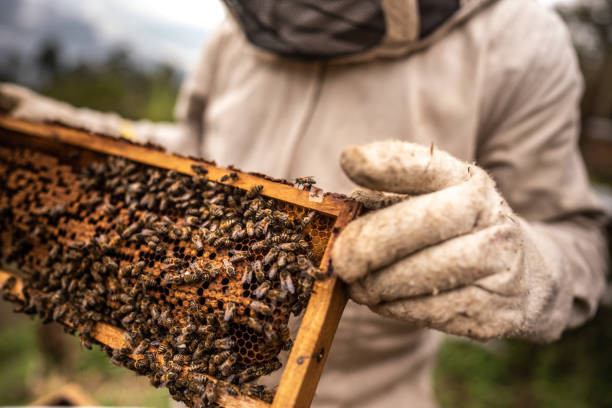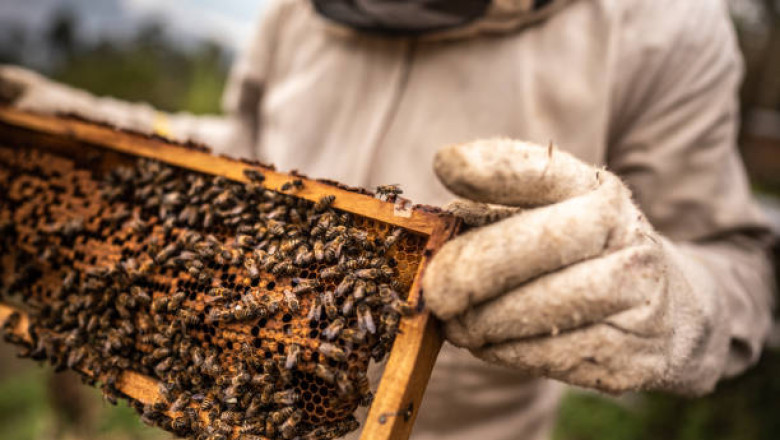views
Discovering a beehive on your property can be both fascinating and frightening. While bees are essential pollinators for our ecosystem, they can pose a serious risk when their hive is located too close to your home. In such situations, the best course of action is professional bee removal—a safe, humane, and effective solution to prevent stings and potential damage to your property.
Understanding the Importance of Bees
Before discussing removal, it’s important to understand that bees play a vital role in pollination. Honeybees, in particular, are responsible for pollinating a significant percentage of the crops we consume. Their contribution to biodiversity and food security makes them an essential species.
That said, a hive too close to human activity can create a dangerous situation. Allergic reactions to bee stings can be severe, and children or pets may unknowingly provoke the bees. That’s why addressing the issue with care and urgency is so crucial.
Step 1: Don’t Disturb the Hive
The first and most important rule: don’t try to remove the beehive yourself. Swatting at bees or disturbing the hive can provoke a defensive response, potentially leading to multiple stings. Bees are generally non-aggressive, but they will defend their colony if they feel threatened.
Keep a safe distance from the hive and ensure others do the same. Mark off the area if needed, especially if the hive is in a highly trafficked part of your yard or near a building entrance.
Step 2: Identify the Type of Bees
Not all stinging insects are bees. Sometimes, wasps or hornets may be mistaken for bees, and their removal requires a different approach. A professional can help you identify whether you're dealing with:
-
Honeybees (usually golden-brown with black bands)
-
Bumblebees (larger and fuzzy)
-
Carpenter bees (often found boring into wood)
-
Wasps or hornets (more aggressive and with narrower waists)
Accurate identification is essential, as some bees are protected by local regulations. Honeybee colonies, in particular, are often relocated rather than exterminated.
Step 3: Contact a Professional Bee Removal Expert
Once you’ve identified the presence of a beehive, your next step should be to call in a bee removal expert. These professionals are trained to handle bees safely and humanely. Here’s what to look for when hiring a service:
-
Licensed and insured: This ensures accountability and safety.
-
Experienced with bee relocation: Ask if they practice humane methods of removal and relocation.
-
Positive reviews and local presence: Look for companies with a strong reputation in your area.
-
Knowledge of local regulations: Bee protection laws vary by region, so choose someone familiar with your local laws.
Most removal experts offer a free consultation and can assess the hive’s size, location, and complexity to provide an accurate quote.
Step 4: Understand the Removal Process
A professional bee removal process typically involves:
-
Inspection: The expert will assess the hive’s location and determine the type of bees involved.
-
Protection: They’ll wear protective suits and use specialized tools to avoid harming the bees or themselves.
-
Safe extraction: Bees are often removed using vacuum systems designed to keep them alive and calm.
-
Hive relocation: Many companies partner with beekeepers or apiaries to relocate the hive to a safe environment.
-
Clean-up and prevention: After the bees are removed, the area is cleaned, and steps may be taken to prevent reinfestation, such as sealing entry points.
Step 5: Prevent Future Bee Infestations
After successful bee removal, it’s important to take preventative measures. Bees are attracted to certain environments, and eliminating these can reduce the risk of future infestations:
-
Seal cracks and crevices in walls, attics, and foundations.
-
Remove old hives completely; leftover honeycomb can attract new swarms.
-
Secure garbage bins and compost piles that might contain sweet or sugary substances.
-
Trim trees and shrubs regularly to reduce nesting areas.
-
Avoid using strong perfumes or bright floral patterns when spending time outside.
You can also consult your bee removal professional for additional tips specific to your property layout and location.
Why DIY Methods Are Not Recommended
You may find online tips suggesting DIY solutions like spraying water, using smoke, or applying chemical repellents. However, these methods can be ineffective, dangerous, and even illegal in some regions. Attempting to remove a beehive on your own can:
-
Agitate the colony and lead to aggressive behavior
-
Damage the structure of your home (especially if the hive is inside a wall)
-
Result in incomplete removal, leading to re-infestation
-
Harm beneficial bees and disrupt local ecosystems
Ultimately, calling in professionals is the safest, most responsible way to handle a hive.
Cost of Bee Removal
The cost of professional bee removal varies depending on factors like hive size, location, and complexity. Here’s a general estimate:
-
Basic outdoor hive removal: $150–$300
-
Interior hive removal (e.g., walls, attics): $300–$800
-
Structural repairs (if needed): Additional costs may apply
Some bee removal services offer free inspections or discounts for same-day service. Others may provide guarantees or follow-up visits included in the original price.
When to Act Immediately
Certain situations require urgent action, such as:
-
A large swarm gathering rapidly
-
Hives located in walls or roofs
-
Allergic individuals in the home
-
Pets frequently visiting the area
-
Signs of damage or bee entry indoors
Delaying removal in these scenarios could lead to bigger problems, including property damage or health hazards.
Final Thoughts
Finding a beehive on your property might seem alarming, but there’s no need to panic. With timely, professional bee removal, you can protect your home, your loved ones, and the bees themselves. Avoid DIY risks, act promptly, and choose experienced specialists who practice humane and environmentally responsible methods. Bees are our allies in nature—let’s treat them with the respect they deserve while keeping our homes safe.















Comments
0 comment